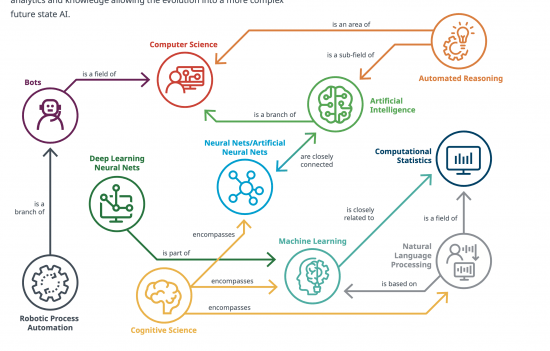It’s important to remember AI isn’t magic (or robots coming to replace your doctor) — it’s just math. Terms like “machine learning” and “deep learning” are simply ways of explaining statistics-based computer algorithms. These algorithms need a lot of data to identify patterns and become powerful prediction tools.
AI refers to multiple technologies that can be combined in different ways to sense, comprehend and act with the ability to learn from experience and adapt over time (Figure 3). (Note source)
AI includes Natural Language Processing (“NLP”) and translation, pattern recognition, visual perception and decision making.
Machine Learning (“ML”), one of the most exciting areas of AI, involves the development of computational approaches to automatically make sense of data – this technology leverages the insight that learning is a dynamic process, made possible through examples and experiences as opposed to pre-defined rules.
Like a human, a machine can retain information and becomes smarter over time.
Unlike a human, a machine is not susceptible to sleep deprivation, distractions, information overload and short-term memory loss – that is where this powerful technology becomes exciting.

Artificial intelligence (AI) is not plug-and-play software. It is a sophisticated set of smart technologies that are customized to seek out and learn from data or experience; and then perform tasks based on what they learned while improving through experience.
While AI can be used to mimic human intelligence, it can also uncover nuanced and complicated patterns that are far beyond human capabilities to process and identify.
AI applications range from basic to incredibly complex. Simple AI applications can include tools like chatbots and automated phone screeners, which are taught proper response to different voice or text commands.
On the more complex end of the spectrum, AI can analyze huge data sets to uncover trends and answer important questions – like which patients are most likely to respond to a certain treatment – then make predictions on how to respond or interpret what might be happening.






